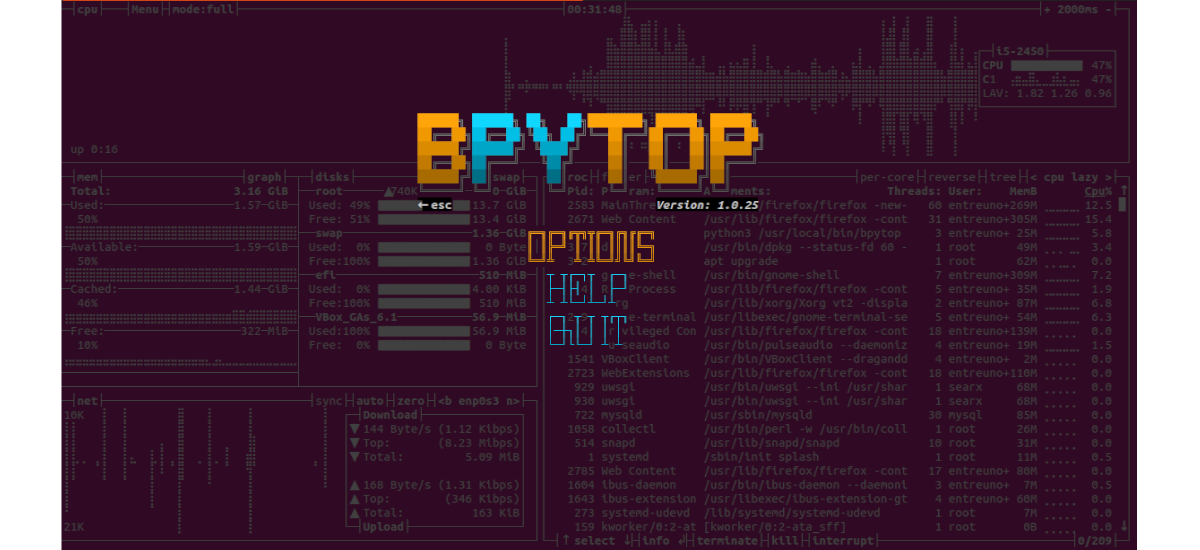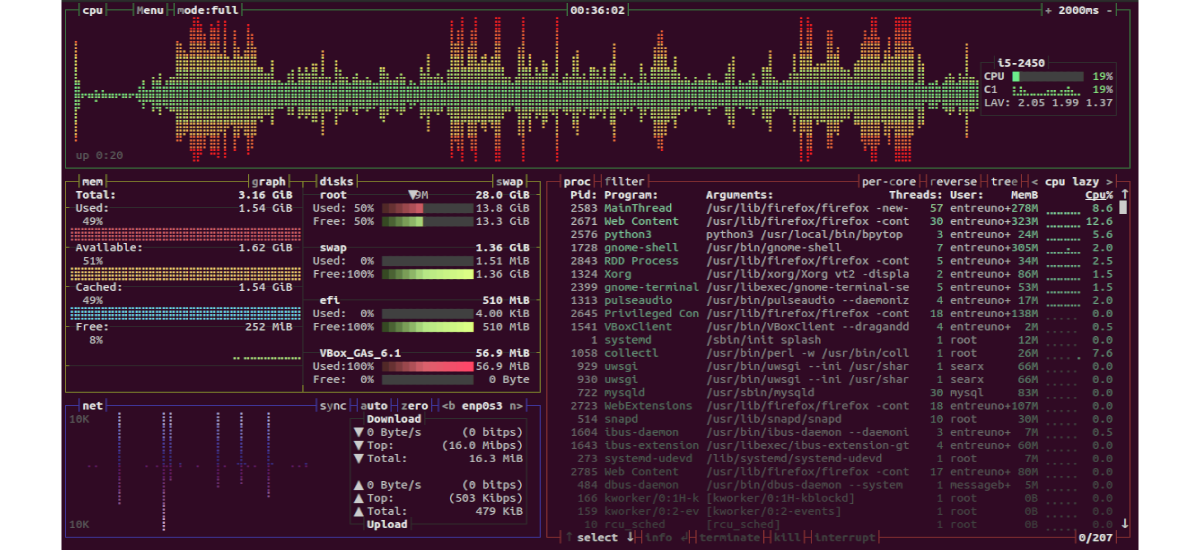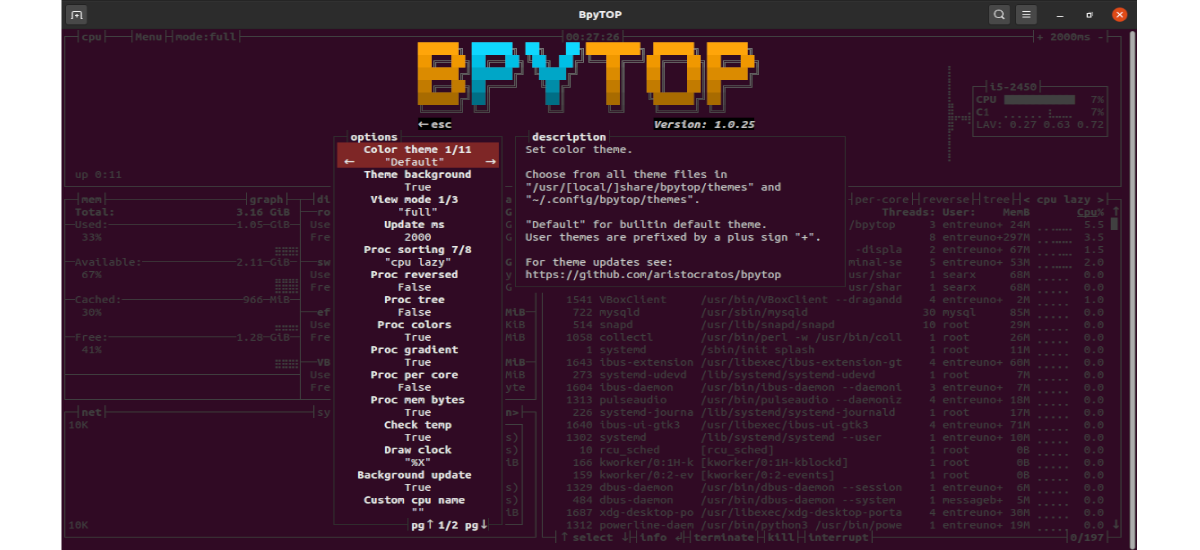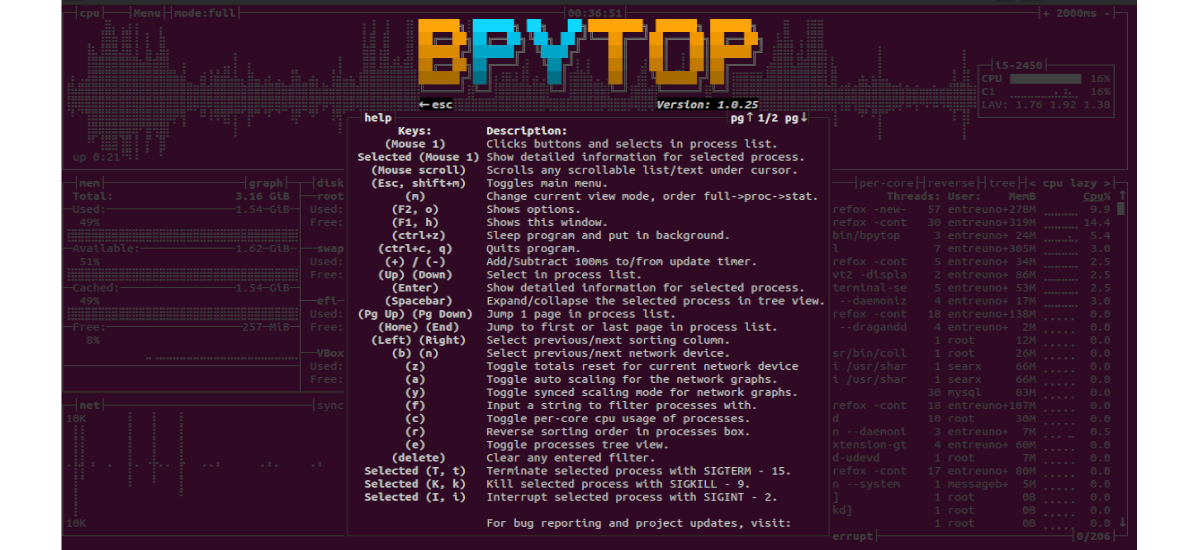
In the next article we are going to take a look at a top alternative called BpyTOP. Is about a resource monitor that displays processor, memory, disk, network, and process usage and statistics. As the name suggests, it is written in Python.
Nowadays, having the ability to monitor the use of system resources is something important for many users. Knowing the use of resources is very helpful when making decisions about the general maintenance of the system. There are some options, like top and htop, but these only show some system metrics, like CPU and memory usage. Bpytop is a terminal-based resource monitor that works efficiently and highly visually.
The author of this tool is the same one who developed bashtop. Between if they do not have many differences. Both utilities serve the same purpose and have the same set of features. The only difference is that they are both written in different programming languages. Bashtop is written in Bash and Bpytop is written in Python. Both programs are compatible with GNU / Linux, Mac OS, and FreeBSD.
Developer claims Bpytop is faster than Bashtop. For this reason it suggests that users use Bpytop instead of Bashtop. However, this is up to the user.
General characteristics of Bpytop
Some of the features that this tool offers for the command line are the following:
- This program offers us a highly visual and responsive user interface with key navigation arrow UP y DOWN.
- When we have started the program, if we press F2 we can change the program options.
- It has integrated mouse support with selectable buttons and scrollable menus.
- This tool has the ability to filter running processes.
- We can check current read and write speeds for disk drives.
- We will have the possibility to send SIGKILL, SIGTERM and SIGINT to running processes.
- It has an intuitive autoscale graph to display the network usage statistics.
- We will see a popup in menu when new version is available.
These are just a few features of this tool. They can consult all in detail from the page on GitHub of the project.
Prerequisites for installation
Before starting with the installation of Bpytop, we will have to make sure that our system meets the following requirements:
- We will have to have Python3 (version 3.6 or later) installed in our system.
- As well we must have the Psutil module. We can install this using the following command in the terminal (Ctrl + Alt + T):
python3 -m pip install psutil
Ubuntu users can have two ways to install Bpytop. The first will be to install from source and the second will be using the corresponding snap package.
Bpytop installation
From the source
For install from source, the first thing we will have to do is clone the GitHub repository. We can do this by opening a terminal (Ctrl + Alt + T) and using the following command:
git clone https://github.com/aristocratos/bpytop.git
For compile from source, let's navigate to the cloned directory:
cd bpytop
Once inside, we will execute the following command:
sudo make install
As you can see in the above screenshot, we will not see results printed on the screen.
From snap package
Bpytop we will also find it available in snap tent. We can install it by opening a terminal (Ctrl + Alt + T) and using the command:
sudo snap install bpytop
Launch Bpytop
For start byptop We are only going to have to execute the following command in the terminal (Ctrl + Alt + T):
bpytop
This command should show us the user interface with the statistics of the resources of our system.
For get help using commands and keyboard shortcuts, we will not have more than press the ESC key and scroll down to select the HELP option.
Here we will get a list of keyboard shortcuts as you can see in the previous screenshot.
For exit the bpytop resource monitor there is nothing more than press'q' on the keyboard.
Configuration options that can also be changed from the user interface are in the directory $ HOME / .config / bpytop.
BpyTOP is an excellent utility. It's fast, responsive, highly customizable, and presents system resources in a thoughtful and logical way. The program is in active development, that we can continue in the project GitHub page.





